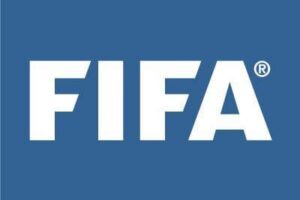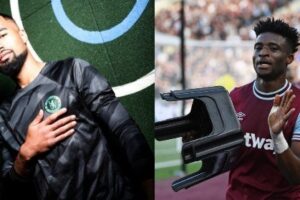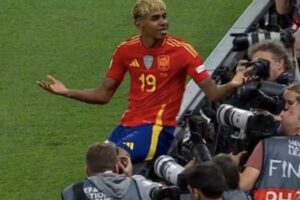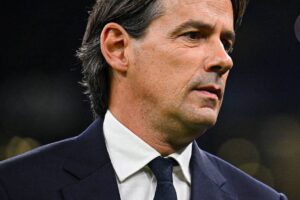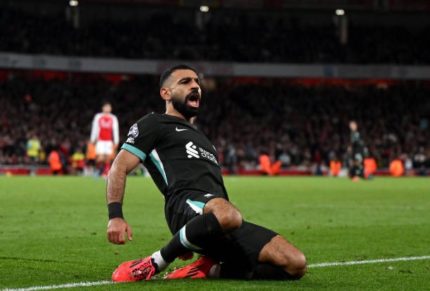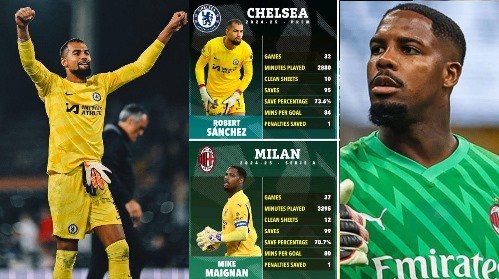The first half of the Premier League clash between Arsenal and Liverpool at the Emirates Stadium was filled with excitement, showcasing both teams’ attacking prowess and defensive struggles. The match began with a flurry of fouls as players tried to assert their dominance early on. Bukayo Saka’s foul just a minute in set the tone for a competitive match, with both teams exchanging free kicks and struggling for early possession.
Arsenal quickly took the initiative, with Saka making an immediate impact by scoring the opening goal in the 9th minute. A left-footed shot from a challenging angle showcased his skill and determination. Liverpool responded well, with Virgil van Dijk equalizing just moments later, heading in a goal from close range following a corner. The end-to-end action was palpable as both teams sought to capitalize on any defensive lapses.
Key Moments and Tactical Adjustments
Throughout the first half, both teams displayed distinct tactical approaches. Arsenal focused on quick transitions, often looking for Saka and Kai Havertz to exploit spaces left by Liverpool’s defense. Saka’s speed and creativity on the right wing were crucial, as he earned multiple free kicks and created goal-scoring opportunities for his teammates.
Liverpool, meanwhile, relied on their physicality and set pieces. The visitors capitalized on corners, with Van Dijk’s goal being a testament to their aerial threat. Despite their equalizer, Liverpool struggled to maintain possession at times, allowing Arsenal to regain control and launch counterattacks. The match’s intensity escalated with physical fouls, reflecting the high stakes and competitive nature of both teams.
Arsenal’s Offensive Resilience
Arsenal showcased their resilience and attacking depth, especially through players like Mikel Merino and Declan Rice. Merino’s header in the 43rd minute put Arsenal ahead again after an impressive set piece from Rice. This goal not only restored their lead but also highlighted the Gunners’ ability to respond to pressure. The home side’s combination play and willingness to shoot from distance were evident, with notable attempts from Bukayo Saka and Kai Havertz that just missed the target.
Despite leading, Arsenal’s defense showed signs of vulnerability, especially during Liverpool’s counter-attacks. The Gunners were forced to rely on Gabriel Magalhães and Thomas Partey to organize the backline effectively. As the first half drew to a close, it was evident that Arsenal would need to tighten their defense in the second half to maintain their lead.
Liverpool’s Response and Second Half Outlook
Liverpool’s first-half performance was characterized by their ability to create chances, highlighted by Mohamed Salah’s near-miss from outside the box. However, their inability to capitalize on these opportunities left them trailing at the break. Jurgen Klopp will likely emphasize the importance of maintaining possession and being more clinical in front of goal during halftime.
Looking ahead to the second half, Liverpool must find a way to break down Arsenal’s defense while tightening their own to prevent further goals. The stage is set for an exciting continuation of this battle between two Premier League giants. With the score at 2-1, the next 45 minutes could prove crucial for both teams as they push for vital points in their campaigns. The fans are sure to witness more drama and skill as both sides vie for supremacy in this thrilling encounter.
Second Half Momentum Shift: Arsenal’s Strong Start
Arsenal entered the second half leading 2-1, showing confidence and momentum. Their defense was resolute, led by Gabriel Magalhães, who quickly intervened in the 46th minute after Darwin Núñez committed a foul, resulting in a free kick. Arsenal’s defensive line showed discipline and readiness as they attempted to protect their lead, aiming to stifle Liverpool’s offensive advances. Gabriel’s injury just two minutes into the half, however, temporarily stalled the game. This injury was impactful, as Gabriel has been instrumental in Arsenal’s backline.
After the match resumed in the 50th minute, Arsenal continued to play assertively, aiming to hold onto their lead. However, Liverpool increased their pressing strategy, resulting in Mohamed Salah testing Arsenal goalkeeper David Raya with a powerful shot in the 52nd minute. Raya’s save was crucial in maintaining Arsenal’s slim advantage, but Liverpool’s persistent attacks hinted at a possible comeback. Despite Arsenal’s solid attempts to regain control, Liverpool’s rising momentum became more apparent.
Liverpool’s Strategic Substitutions and Tactical Changes
As Liverpool trailed 2-1, they introduced multiple substitutions at the 63rd minute to inject fresh energy and alter their approach. Cody Gakpo replaced Luis Díaz, Kostas Tsimikas took over for Andy Robertson, and Dominik Szoboszlai substituted Alexis Mac Allister. Each substitution reflected Liverpool manager Jürgen Klopp’s intent to intensify Liverpool’s offensive play and seek an equalizer. Gakpo and Szoboszlai’s entry added dynamism and boosted Liverpool’s chances, giving Arsenal’s defense a harder time as they held their narrow lead.
The substitutions had an almost immediate effect, with The Red pressing forward aggressively. Ryan Gravenberch took a shot from outside the box in the 65th minute, though it missed its mark. However, The Red’s increased control and fluidity in attack signaled a brewing equalizer. Arsenal’s defense grew increasingly stretched, struggling to counter The Red’s reinvigorated formation, leading to Salah’s eventual breakthrough goal in the 81st minute.
The Tense Closing Minutes: Arsenal’s Response and Liverpool’s Persistence
As the game entered the final quarter, Arsenal made strategic substitutions, with Gabriel Jesus and Ethan Nwaneri coming on to add pace and attacking options. Gabriel Jesus quickly tested Liverpool’s defense, delivering two close-range attempts in the 87th and 88th minutes, both of which Liverpool’s defensive efforts managed to block. The game became tense as Arsenal tried to regain their lead while The Red focused on maintaining their newfound balance.
With seven minutes of added time announced, both teams showed urgency. Arsenal attempted to press forward, but Liverpool’s defensive efforts, led by Wataru Endo and Virgil van Dijk, held firm. Endo’s introduction in the 90th minute helped Liverpool retain possession and control the game’s tempo, frustrating Arsenal’s attempts to break through. The closing minutes saw several fouls as both teams pushed hard, with Núñez receiving a yellow card for a rough foul in the 94th minute. Despite Arsenal’s late efforts, Liverpool’s resilience ensured the match ended in a draw.
Match Conclusion: Key Performances and Tactical Insights
The 2-2 draw highlighted Liverpool’s resilience and adaptability after being down 2-1. Mohamed Salah’s equalizing goal underscored his importance to Liverpool’s offense, especially with the creative support from Darwin Núñez and substitutes like Gakpo and Szoboszlai. The Red’s defense, led by van Dijk, showcased strategic discipline in the game’s tense moments, stalling Arsenal’s final advances and securing the point.
For Arsenal, injuries to Gabriel and Timber were significant blows, with their defense appearing somewhat vulnerable after Gabriel’s substitution. David Raya’s key saves and Jesus’s late-game efforts illustrated Arsenal’s fighting spirit. However, the team may need to refine their defensive depth to maintain leads in challenging matches. The result demonstrates both teams’ strengths and areas for improvement as they aim to climb the standings in the coming fixtures.

